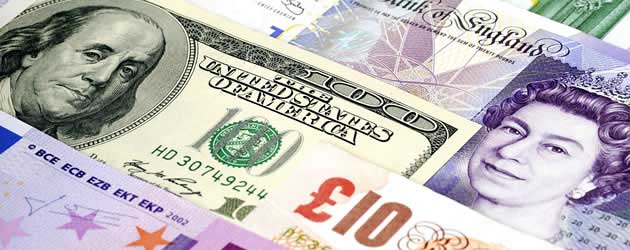 The Pound suffered from a paradigm shift earlier this week as Bank of England Governor Mark Carney intimated that policymakers will not raise interest rates until real wages start to rise, shortly after a report showed that UK wage growth fell into negative territory for the first time in five years during the second quarter.
The Pound suffered from a paradigm shift earlier this week as Bank of England Governor Mark Carney intimated that policymakers will not raise interest rates until real wages start to rise, shortly after a report showed that UK wage growth fell into negative territory for the first time in five years during the second quarter.
Demand for Sterling plunged following the announcement as investors pushed back their BoE rate hike projections. It is now believed/hoped that the bank will start hiking rates in February 2015, three months later than previous estimates of November 2014. With UK wage growth (-0.2%) currently running at a level materially lower than inflation (1.9%) it is even possible that the BoE will be minded to postpone its monetary tightening plans even further into the future, as the wait for ‘real’ wage growth continues.
Sterling has fallen to a 4-month low against the US Dollar, a 6-week low against the Euro, a 6-week low against the Canadian Dollar, a 2-month low against the Australian Dollar and a 3-week low against the New Zealand Dollar following the publication of the quarterly inflation report.
Later on this morning British GDP is expected to be confirmed at 0.8% for the second quarter. Annual growth is likely to print at 3.1%.
A quarterly growth score south of 0.8% has the potential to compound the Pound’s woes, however, it is possible that Sterling will struggle even if the GDP report comes in higher-than-anticipated.
Although rate hike bets receded following Wednesday’s central bank announcement, the BoE report actually featured an upgrade to Britain’s UK growth outlook: from 3.4% to 3.5% in 2014. This suggests that policymakers at the bank are happy with the current pace of economic growth, meaning that a stronger second quarter GDP score is unlikely to have a significant bearing on the conversation surrounding interest rates.
Future economic reports will be scrutinised for signs of rising price pressures, but this morning’s Q2 GDP revision is unlikely to carry much clout in terms of BoE rate hike expectations.
With GBP/USD below key resistance at 1.67 and GBP/EUR below significant resistance at 1.25 it is possible that Sterling could continue to weaken as technical trading patterns begin to mimic the receding outlook for a prompt rise in UK interest rates.
US data looks to be in good shape, but Eurozone ecostats point towards another potential flare-up in the second half of the year. German GDP shrunk by -0.2% in the second quarter, which brought Eurozone economic output to a standstill at 0.0%. This means that Sterling has a far greater chance of appreciating against the single currency than it does against the ‘Greenback’.

Comments are closed.